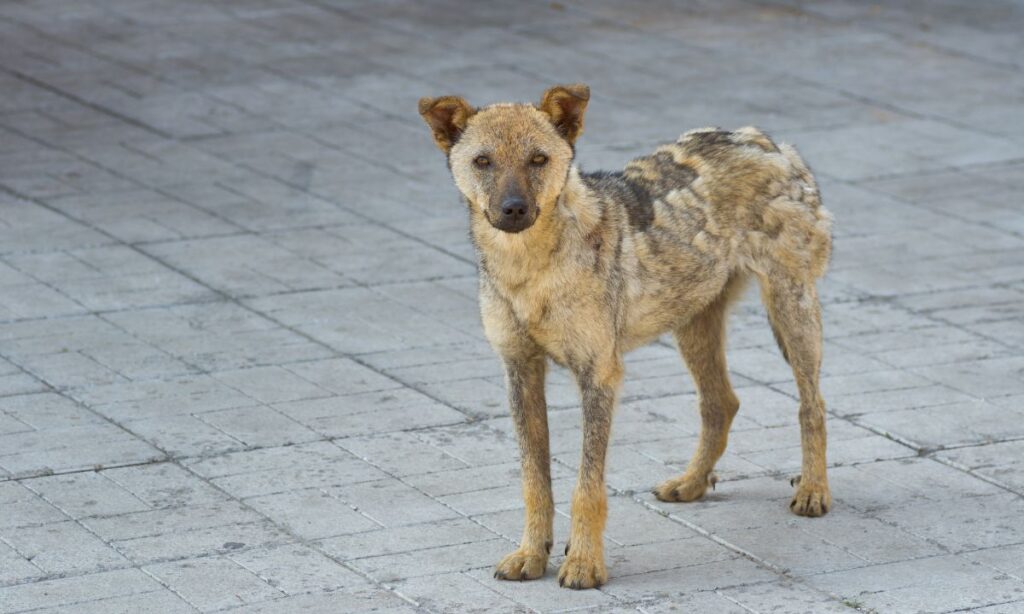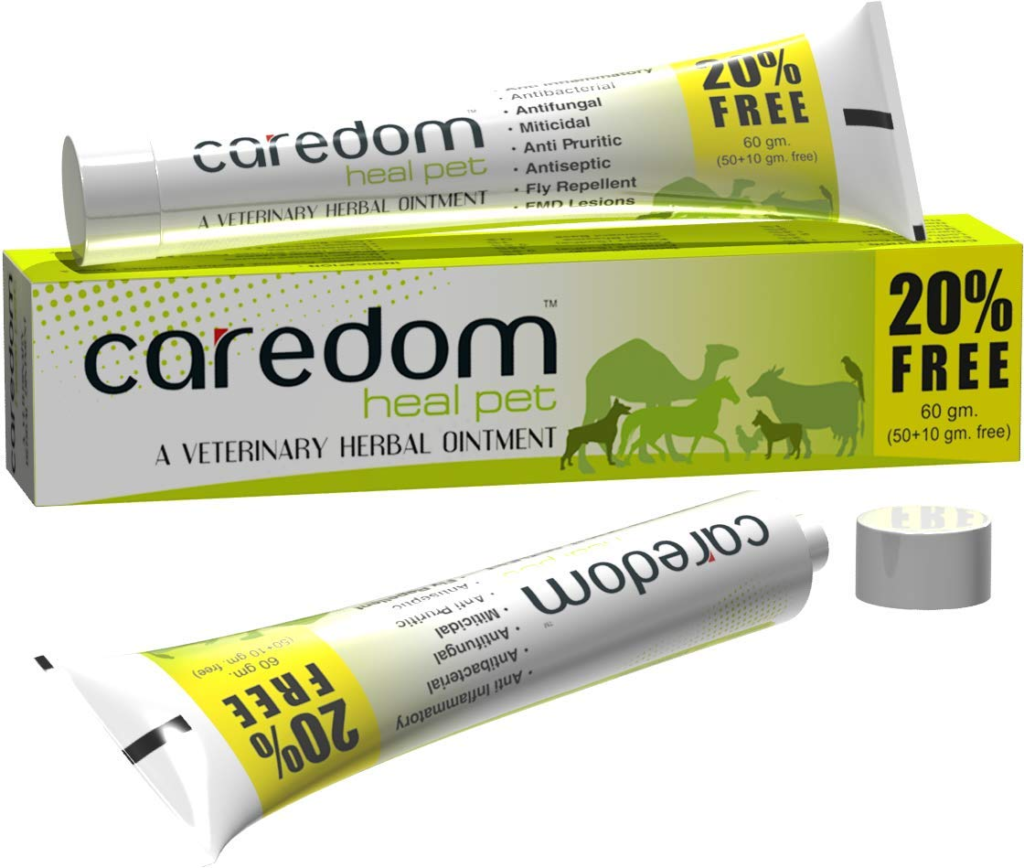Ringworm is actually a fungus and not a worm. Ringworm in dogs is a widespread fungal infection that affects almost all domestic animal species, including dogs.

What Exactly Is Ringworm?
The fungus is frequently referred to as ringworm because to the circular, raised, red ring look typically observed in human ringworm infections. Dermatophytes, sometimes known as ringworm, is a collection of pathogenic fungi. Seventy percent of ringworm cases in dogs are caused by the fungus Microsporum canis, twenty percent by Microsporum gypseum, and ten percent by Trichophyton mentagrophytes.
The fungus grows and lives in the outermost layer of skin, the hair follicles, and even the nails of afflicted dogs. In most situations, the illness is superficial and affects only a few regions of the dog’s body. Puppies, senior dogs, and dogs with impaired immune systems are sometimes affected by extensive ringworm infestations.
How Does Ringworm In Dogs Spread?
Ringworm is transmitted from dog to dog through direct contact with the fungus. This can occur when a dog has direct contact with an infected animal or person, or when it touches a contaminated material, such as a couch, comb, food bowls, bedding, or carpet. The fungus spores responsible for the spread can remain alive for up to 18 months and are often transmitted through hair loss or breakage.
Symptoms Of Ringworm In Dogs
Ringworm is not a life-threatening illness, but it is highly contagious and requires veterinary assistance. Knowing the symptoms of ringworm in dogs can help prevent the disease from spreading to humans and other animals.
- In dogs, ringworm typically manifests as circular regions of body hair loss. As these lesions expand, they may begin to heal in the centre, creating a patchwork look; they may also become inflammatory or scabbed.
- Typically, ringworm does not itch. The brittleness and fragility of the afflicted hair follicles aids in the spread of the disease throughout the home. In rare instances, the fungus causes the claws to become brittle and rough.
- Contrary to popular belief, ringworm is not truly a worm. Instead, it is a form of fungal infection that generates scaly, ring-shaped hairless spots. When it affects humans, there is a ring of elevated, irritated tissue surrounding the infection, hence the term ringworm. It may also be referred to as athlete’s foot or jock itch, depending on its location.
- Although ringworm is not dangerous, it is an unpleasant infection that can cause your dog’s fur to fall out and can also infect you. Puppies and senior dogs are the age groups most severely impacted. Without treatment, they can acquire ringworm infections that affect the entire body.
Consult your veterinarian if your dog displays any of the following symptoms:
- Circular hair loss patches
- Dry, brittle locks
- Scabby, irritated skin
- Sharp, fragile claws
- Hair loss, changes in the look of the coat, and inflamed skin may indicate another ailment.
- Dogs with skin problems may have serious underlying diseases, such as Cushing’s disease, hypothyroidism, or a nutrient imbalance, or they may merely have signs of allergies, a new parasite, or an infection.
Remedies & Treatments for Ringworm In Dogs
There are two forms of ringworm treatments: topical and oral. Since ringworm resides on the skin’s surface and can be easily treated with ointments and creams, topical therapies are typically administered first. However, oral medicine is occasionally recommended for more severe instances or for dogs with recurrent ringworm.
Here are some ways to treat ringworm in your dog:
Use antifungal shampoo to bathe your dog
The fur in an affected area becomes more delicate and susceptible to breaking due to ringworm. These damaged hairs contain ringworm spores, so they are highly contagious.
If your dog has been exposed to ringworm, you can potentially stop the infection with over-the-counter antifungal shampoos or dips. Every antifungal shampoo has its unique application directions, but in general, it is most effective when applied at least twice per week. If your dog’s veterinarian has given you further instructions, you should adhere to them.
Apply antifungal ointments or creams
Antifungal lotions and ointments are a viable treatment choice for minor, localised cases of ringworm.
These topical remedies can be applied more successfully to a specific area than shampoos. Additionally, they can diminish the infectiousness of the ringworm patch.
You can ask your pet’s veterinarian about over-the-counter antifungal medicines they recommend, or they may recommend a prescription ointment. In either case, it is likely that you will need to apply the topical treatment for at least six weeks, if not longer.
Shave the Region Encircling the Infection
Since ringworm spores grow on and in damaged hairs, cutting the fur around your dog’s ringworm illness may reduce its spread.
Trimming the fur close to the skin minimises the likelihood of hair loss and breakage. As a result, the chance of spreading infectious materials throughout the home and causing a subsequent ringworm outbreak is diminished. Some dermatologists advocate for this procedure, while others may not. Ask your dog’s veterinarian if this treatment is worthwhile for your pet.
Regularly vacuum and wash bedding.
Since ringworm is so contagious, it is essential to maintain a clean home. Ringworm spores can remain potentially contagious for months after they are shed.
When treating your pet or yourself for ringworm, you should vacuum frequently to eliminate shedded fur and skin debris from your home. You should also wash their bedding and toys frequently.
Keep Affected Pets Quarantined
Your dog can spread ringworm spores anyplace they are allowed to roam. To offer yourself a greater chance of keeping the infection limited, keep any animals with ringworm confined to regions that are easy to clean. Keep other pets away from the affected animal as much as possible to decrease the chance of spreading the fungus.
Takeaway
Since ringworm can be transmitted to humans, you should be careful as well. Keep older people, young children, and anyone with skin problems or a weakened immune system away from your dog as long as it has ringworm. While it may be difficult to keep your pet quarantined for the six weeks or longer it takes to cure ringworm, it will be simpler than fighting ringworm repeatedly.






